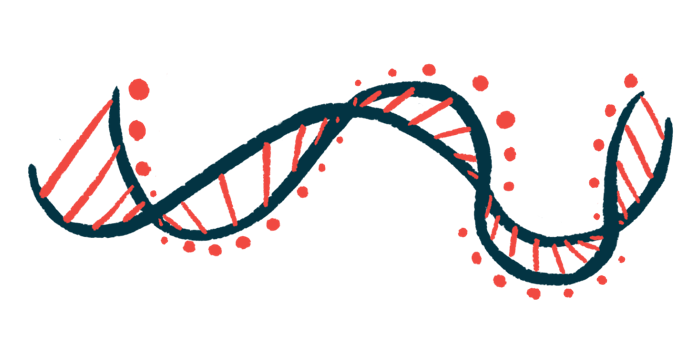Blood test may track ALS progression, speed diagnosis
Model test distinguishes ALS from other neurological conditions

A new blood test that analyzes tiny fragments of DNA released by dying cells may help diagnose amyotrophic lateral sclerosis (ALS) and predict how quickly the disease will progress, a study suggested.
“Our model test could not only distinguish ALS patients from healthy individuals but also from those with other neurological conditions, which is a challenge for current ALS biomarkers,” Christa Caggiano, PhD, lead author of the study and a postdoctoral fellow at the University of California, Los Angeles, said in a university news story. “We hope this could lead to faster diagnoses and better predictions of patient outcomes.”
The study, “Epigenetic profiles of tissue informative CpGs inform ALS disease status and progression,” was published in Genome Medicine.
ALS is marked by the degeneration and death of specialized nerve cells that control movement, resulting in progressive muscle weakness. There is no single laboratory test that can confirm the condition, so ALS diagnosis usually takes months and requires careful clinical evaluation to rule out other conditions.
Scientists are actively working to find ways to make faster and more accurate diagnoses. Earlier diagnosis could help patients access ALS treatment and care sooner, leading to better outcomes.
A different kind of test
When cells die, fragments of their DNA are released into the nearby space and ultimately reach the blood. Researchers have previously found that this cell-free DNA (cfDNA) can help identify cancer, infections, and complications during pregnancy.
Caggiano and colleagues wondered if cfDNA testing could be expanded to diagnose ALS.
“There is an urgent need for a biomarker in ALS to diagnose patients more quickly, support clinical trials and monitor disease progression,” Caggiano said. “Our study presents cell-free DNA, combined with a machine learning model, as a promising candidate to fill this gap.”
The researchers examined the epigenetic profiles of cfDNA samples. Epigenetics refers to chemical modifications in DNA that change which genes are turned on or off. Some of these modifications are specific to a given tissue, so detecting those modifications in cfDNA could reveal which tissues are being damaged in ALS.
Using samples from two independent groups — one in Australia and one in the United States — the researchers studied the epigenetic patterns of cfDNA at thousands of DNA sites that differ among tissue. They then used a machine learning model to detect patterns linked to ALS.
To assess the accuracy of the method, the researchers used a statistical test called the area under the receiver operator characteristic curve, or AUC. This metric looks at how well a test can distinguish between two groups (i.e., ALS or not). AUC scores range from 0.5 to 1, with higher numbers reflecting better accuracy.
The study involved 192 participants across two datasets. In an Australian group, which included 43 ALS patients, 32 healthy controls, and 15 patients with other neurological diseases, the cfDNA model identified ALS with reasonably good accuracy, with an AUC of 0.82. The model also showed good accuracy for distinguishing ALS from other diseases, with an AUC of 0.91.
In a U.S. dataset involving 41 ALS patients and 45 healthy controls, the cfDNA test performed even better, with an AUC of 0.99.
The results suggest that examining cfDNA epigenetic profiles can effectively distinguish ALS patients from healthy people and from those with other neurological conditions, which is key for a diagnostic test.
“This model significantly discriminated between ALS patients and controls in two independent cohorts, including those with a variety of other neurological diseases,” the researchers wrote. Based on these data, “cfDNA may serve as a potential biomarker for ALS in neurology specialty settings, where individuals are being assessed for symptoms consistent with a neurodegenerative disorder,” they wrote.
The analysis showed that much of the cfDNA appeared to originate from skeletal muscle, consistent with the muscle wasting seen in ALS, as well as from heart tissue and other organs. That indicates that ALS affects multiple tissues, not just the brain and spinal cord.
The cfDNA features also correlated with disease severity and how fast the disease progressed. Models using these epigenetic signals predicted patients’ ALS Functional Rating Scale–Revised (ALSFRS-R) scores and disease progression rates more accurately than models using clinical data alone.
“While encouraging, further work is needed to rigorously calibrate and validate cfDNA as a biomarker for ALS before widespread clinical adoption,” the researchers wrote.







